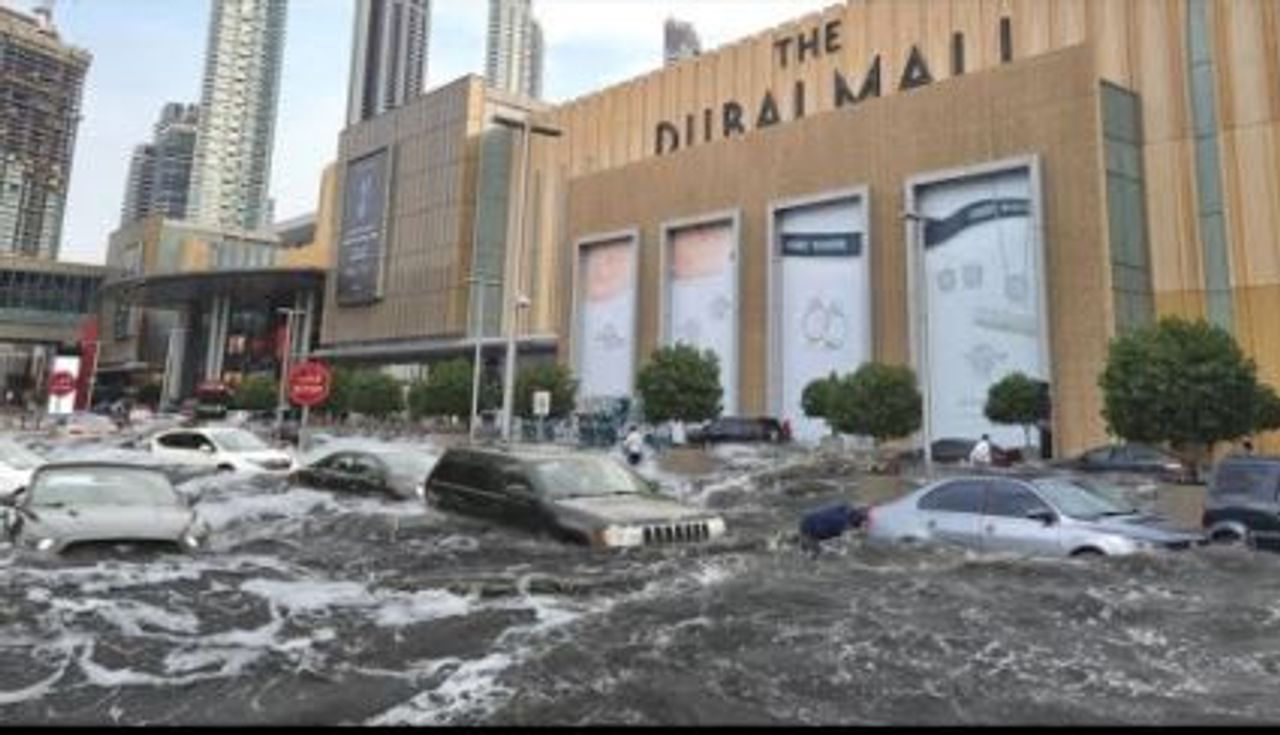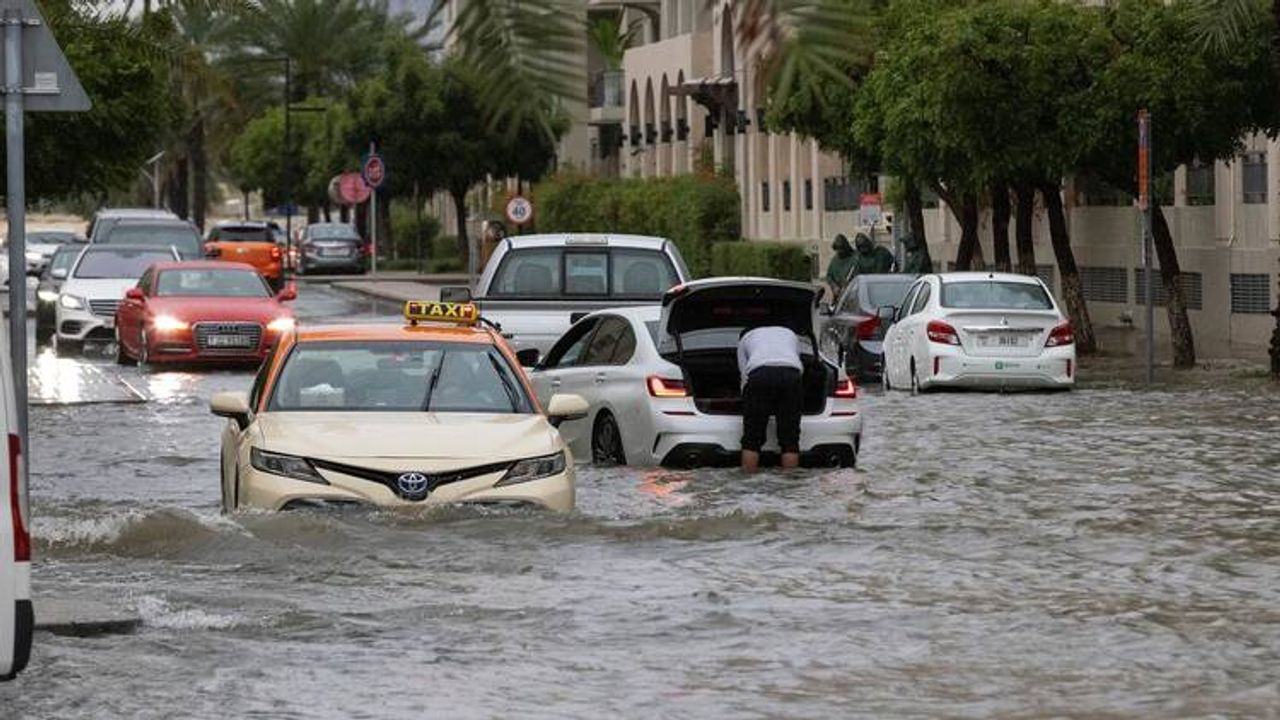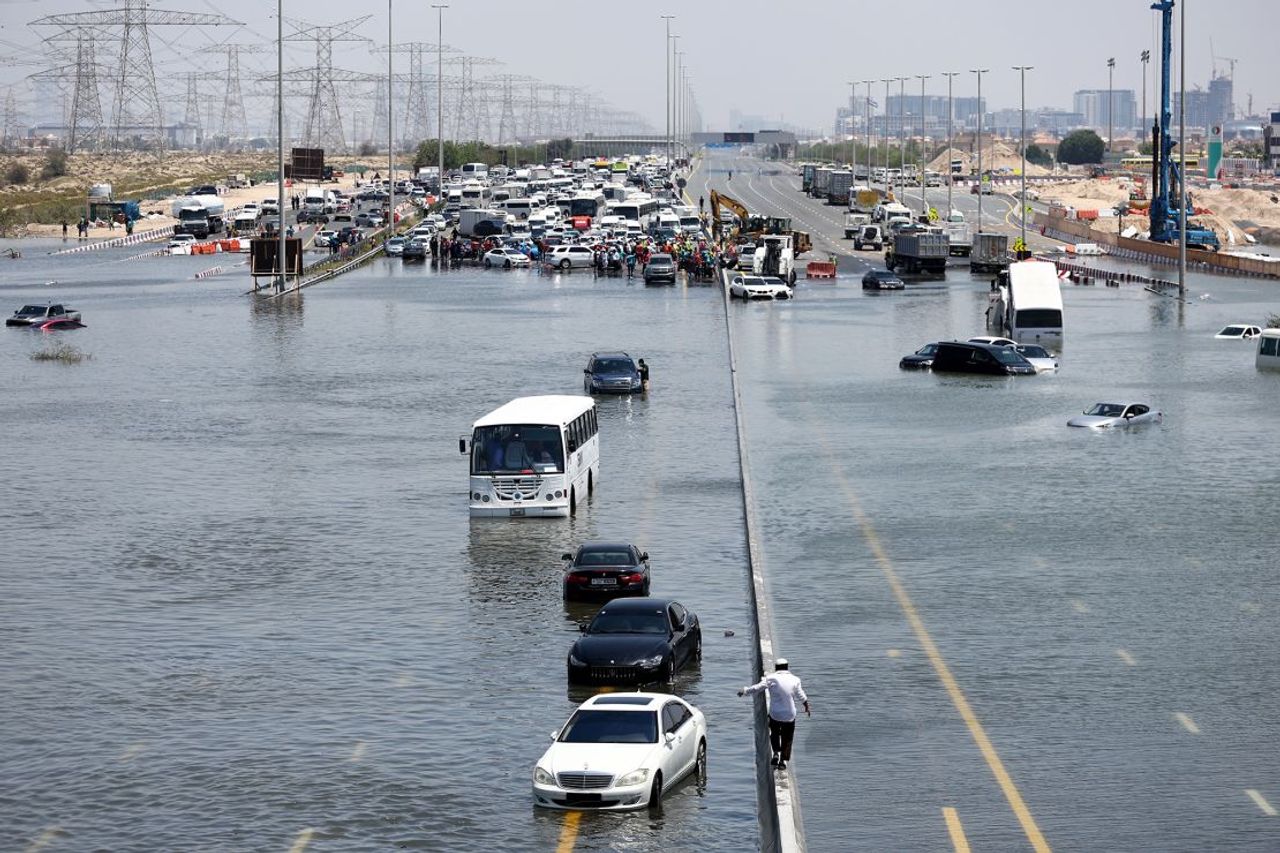Updated April 27th, 2024 at 09:37 IST
Dubai Flood: An Alarm About Climate Change, Demands Cooperation | Explainer
Dubai Rain: Due to rising temperatures and an increase in atmospheric moisture content, climate change most likely made the situation worse.
Advertisement
Typically recognized for its dry weather, the Middle East has recently seen an extraordinary quantity of rain, especially in areas like Dubai and Oman. Prolonged downpours brought in unprecedented levels of rain, severely damaging and disturbing everything. It is believed that these extreme events are a result of climate change.
Dubai Mall Flooded
Exceeding the normal annual rainfall of 94.7 millimeters at Dubai International Airport, more than 142 millimeters of rain were recorded in a single day in Dubai alone. Airports, roadways, and public transportation were all impacted by the severe rain and storms, which also caused widespread flooding and travel disruption. Alerts to avoid needless travel were issued after more than 500 aircraft were canceled, delayed, or diverted. The Mall of the Emirates and Dubai Mall, two of the biggest shopping centers, were also flooded.

Streets Turned Into Rivers
These powerful thunderstorms took Dubai by surprise, a city known for its intense heat and infrequent rainfall. Scenes of an destructive occurrence were evoked by the heavy rain, which turned the city's streets into rivers. To emphasize how bad things were, images of flooded metro stations and people on kayaks became commonplace. This thunderstorm, which caused disruptions to daily life and flooded infrastructure in Dubai, was dubbed the worst in 75 years by meteorologists.

Urgent Need To Adapt Changing Environment
The sudden rainfall demonstrated the city's vulnerability to extreme weather and the importance of having robust emergency procedures and infrastructure in place to mitigate its consequences. As Dubai grows and evolves, climate-resilient infrastructure and sustainable urban design are becoming more and more important. This disaster makes it very evident how unpredictable nature can be and how urgent it is for cities to adapt to a changing environment in order to safeguard the safety and well-being of its residents.
Climate Change Makes Situation Worse
The severity of the heavy rains, which had severe repercussions on its population, greatly affected Oman as well as its neighbors. The increasing floodwaters forced many locals to stay inside their houses, leaving students stuck in buses. Strong storms and higher evaporation—which is associated with rising global temperatures—created an environment that was conducive to heavy rain. Due to rising temperatures and an increase in atmospheric moisture content, climate change most likely made the situation worse. As a result, the region experienced more rainfall in terms of volume, duration, and frequency.

Cloud Seeding: Cause Of Disaster?
There has been unprecedented rain in dry areas not just in Dubai and Oman, but all around the world, from Australia and Greece to the US. Rising temperatures throughout the world intensify storms and raise the possibility of extreme weather events. Notably, Dubai has attempted cloud-seeding as a solution for water security. Nevertheless, the National Centre of Meteorology made it clear that no particular clouds were targeted during periods of intense rainfall. This begs the question of how cloud-seeding works and need more research to comprehend how the environment and human activities interact.
What Is Cloud Seeding?
The government of the United Arab Emirates uses a weather modification method called cloud seeding to ease the nation's water problems. Another name for cloud seeding is artificial precipitation or rain-making. Among the first nations in the Persian Gulf to use cloud seeding technology is the United Arab Emirates. Scientists in the United Arab Emirates employ cloud seeding technology as a supplement to address the nation's water scarcity, which is caused by the intense heat.
Although it's difficult to pinpoint the exact impact, cloud seeding might have had some influence given the complicated dynamics of weather systems. The happenings emphasize how global climate phenomena are interrelated. Experiences with extreme weather in Dubai and Oman are part of a larger trend, which emphasizes the significance of knowledge and preparation. In order to promote resilience and sustainability, communities everywhere must work together to address the effects of climate change.
Advertisement
Published April 27th, 2024 at 09:27 IST